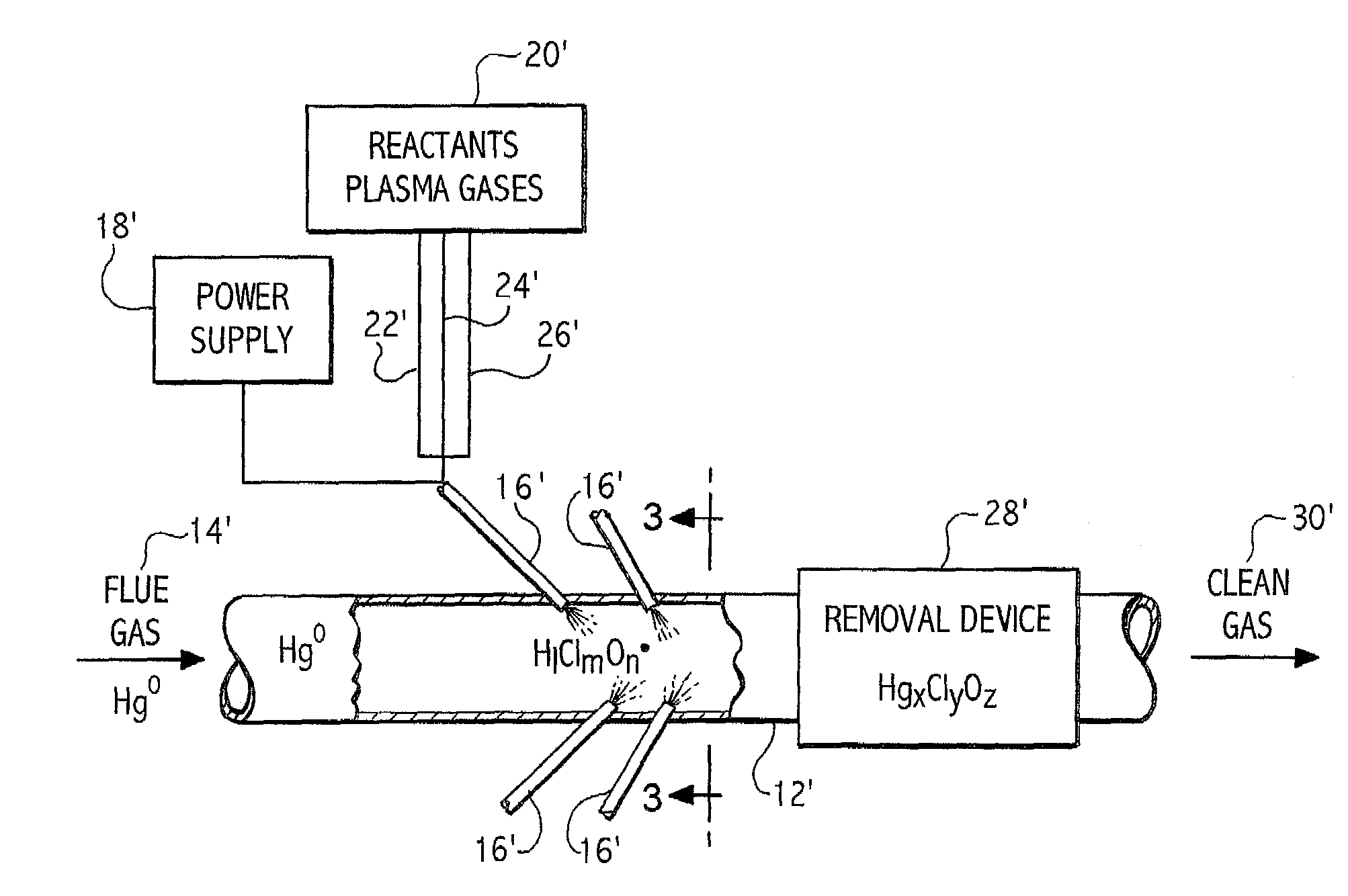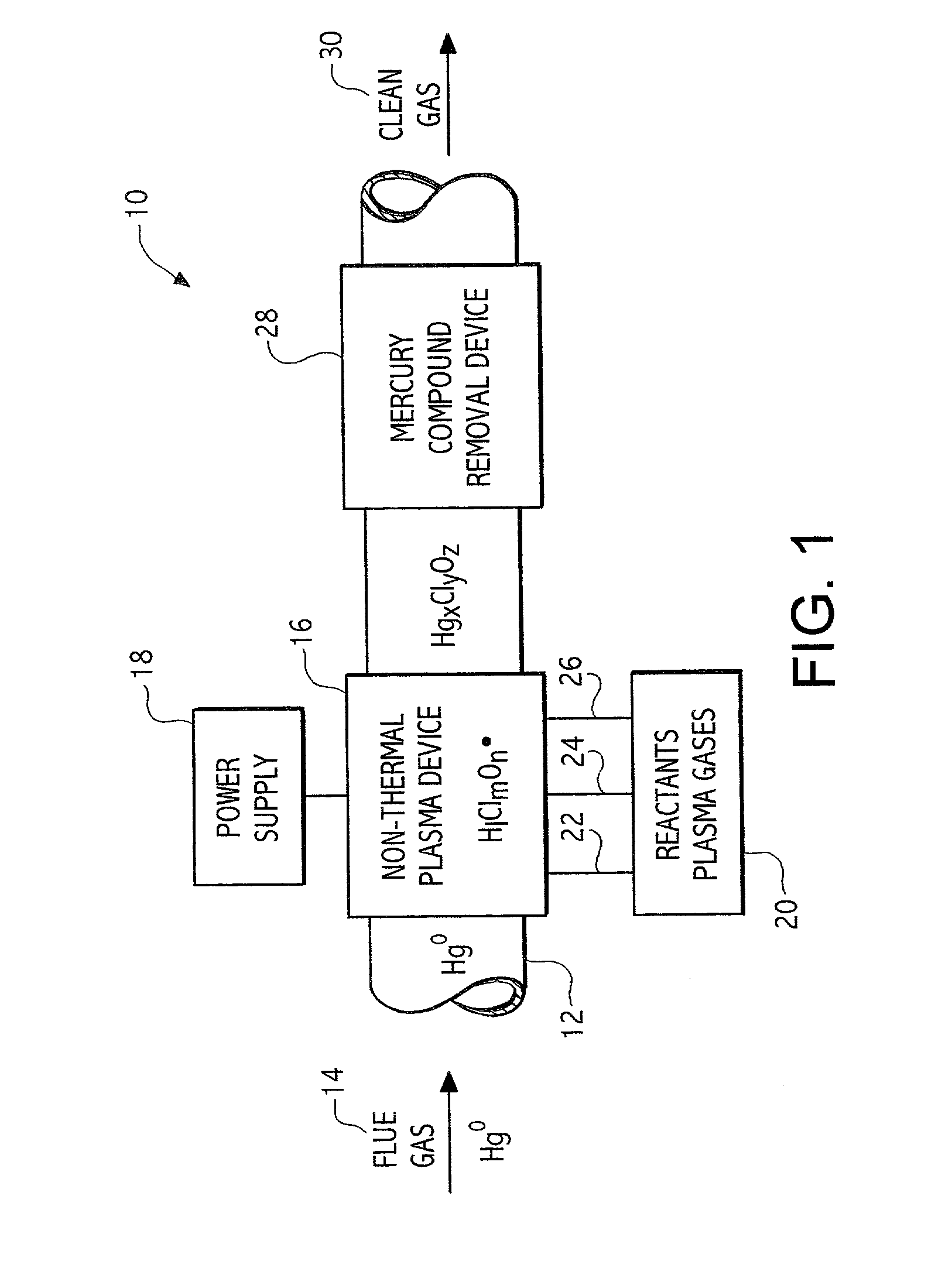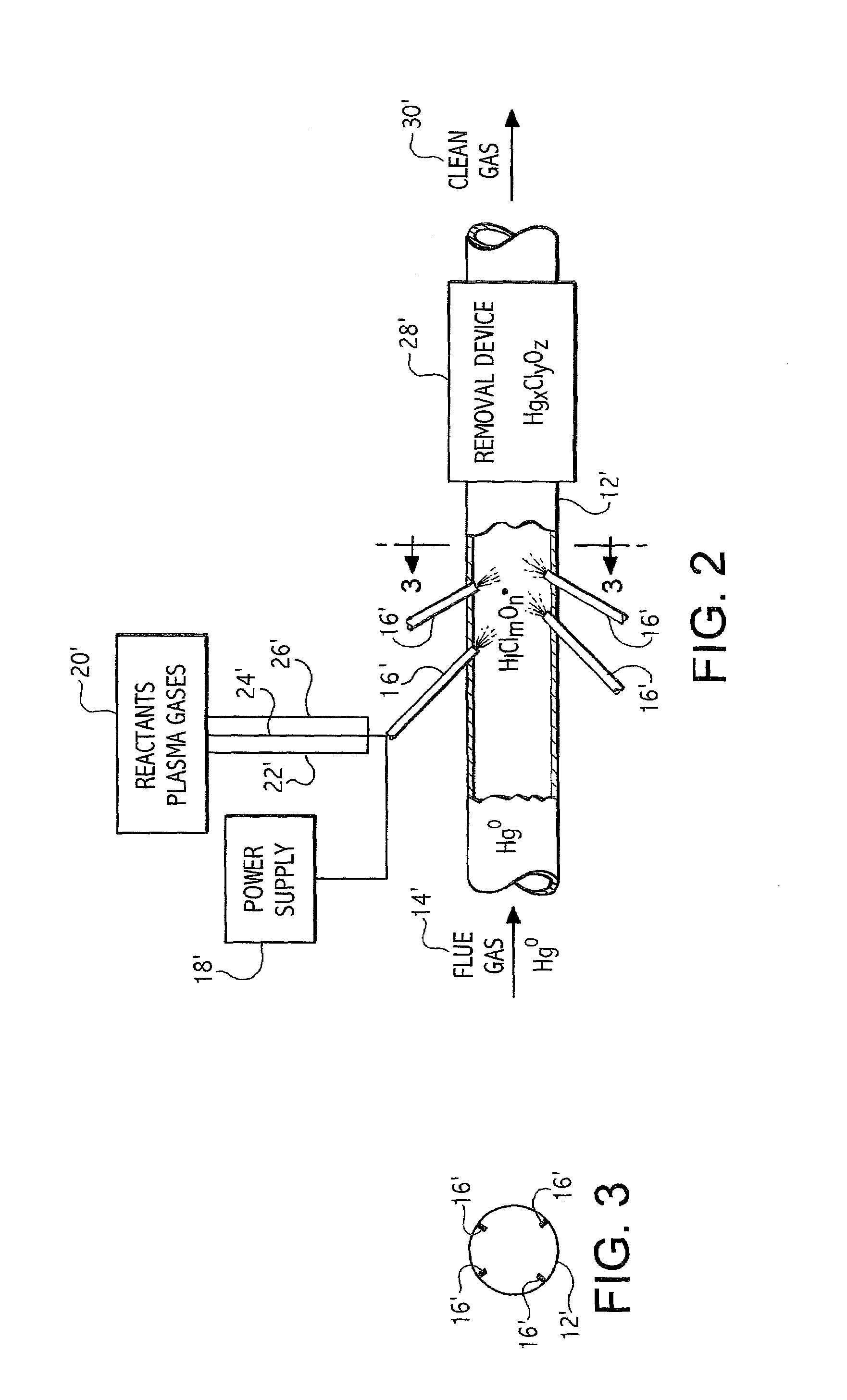Plasma based trace metal removal apparatus and method
a technology of plasma and metal removal, applied in the direction of energy-based chemical/physical/physical-chemical processes, separation processes, chemical/physical/physical-chemical processes, etc., can solve the problems of high toxicity of mercury and mercury compounds, difficult environmental problems of anthropogenic mercury,
- Summary
- Abstract
- Description
- Claims
- Application Information
AI Technical Summary
Benefits of technology
Problems solved by technology
Method used
Image
Examples
Embodiment Construction
[0035]Referring now to the drawings, and particularly FIG. 1, there is shown at 10 a plasma based trace metal removal system. FIG. 1 shows the general features of the removal system 10, whereas specific embodiments of the removal system 10 are illustrated in FIGS. 2, 4, and 5. The removal system 10 includes a duct or conduit 12, into which a flue gas 14 containing elemental mercury flows from a source of flue gas. A non-thermal plasma device 16 is disposed in the duct 12. The plasma device 16 is powered by a power supply 18.
[0036]A source of plasma gases 20 is fluidly connected to the plasma device 16 by supply lines 22, 24, 26. The source of plasma gases 20 includes reactive gases of the general formula HiCljOk, which are delivered in vaporized or atomized forms through the supply lines 22, 24, 26. Depending upon the particular application, the source of plasma gases 20 may have a gas mixture which includes air, oxygen, nitrogen, argon, helium, water, hydrogen peroxide, and other g...
PUM
| Property | Measurement | Unit |
|---|---|---|
| temperature | aaaaa | aaaaa |
| temperatures | aaaaa | aaaaa |
| temperature | aaaaa | aaaaa |
Abstract
Description
Claims
Application Information
 Login to View More
Login to View More - R&D
- Intellectual Property
- Life Sciences
- Materials
- Tech Scout
- Unparalleled Data Quality
- Higher Quality Content
- 60% Fewer Hallucinations
Browse by: Latest US Patents, China's latest patents, Technical Efficacy Thesaurus, Application Domain, Technology Topic, Popular Technical Reports.
© 2025 PatSnap. All rights reserved.Legal|Privacy policy|Modern Slavery Act Transparency Statement|Sitemap|About US| Contact US: help@patsnap.com



